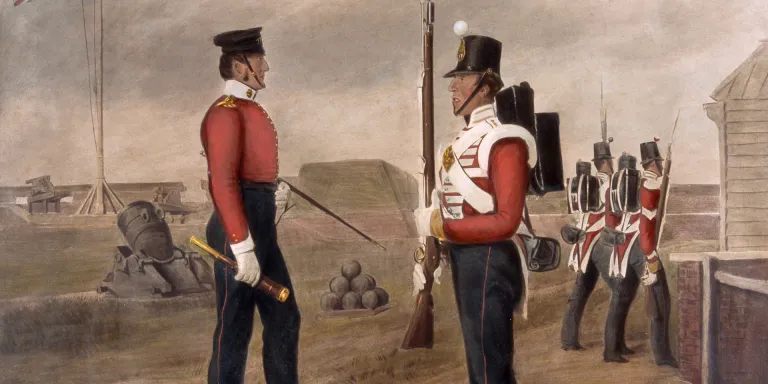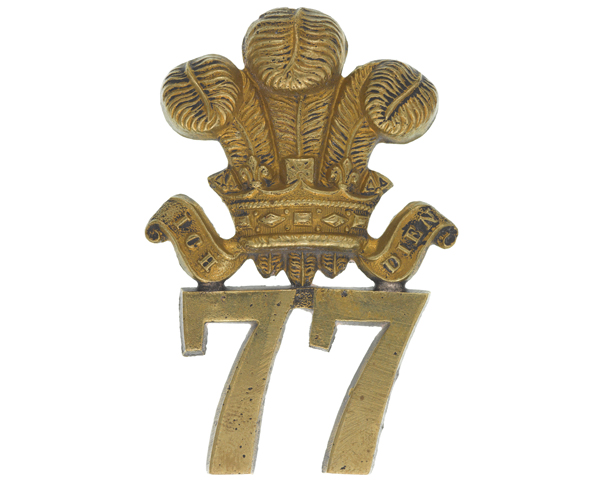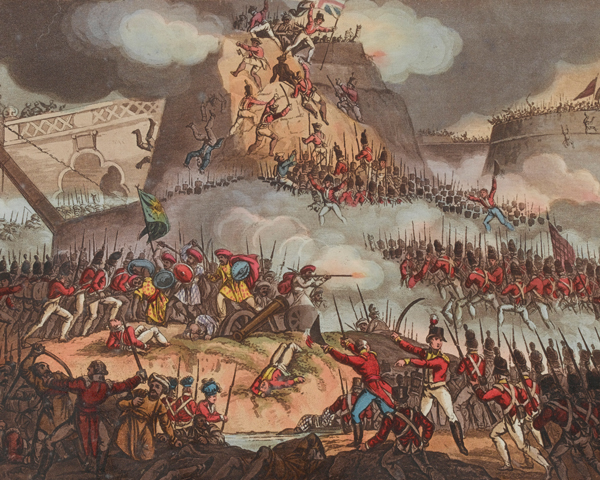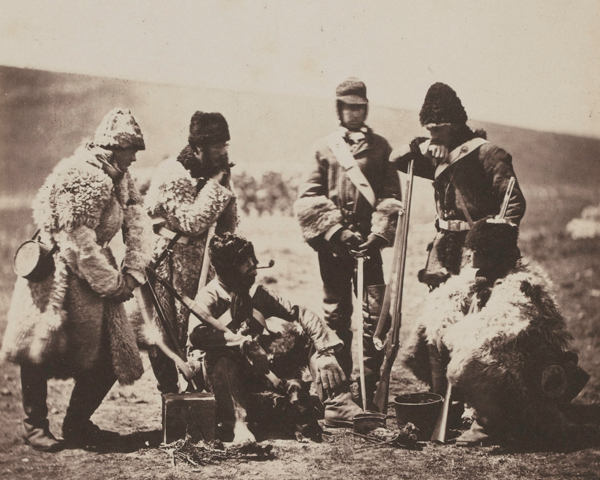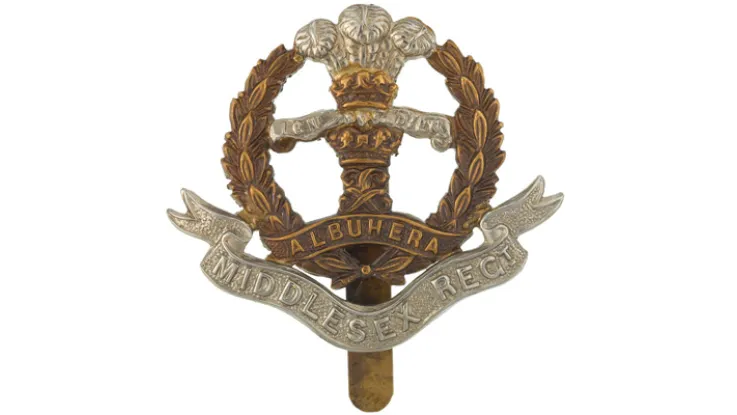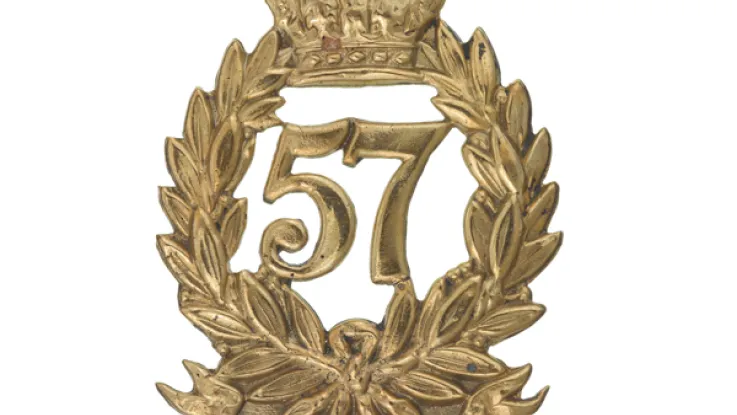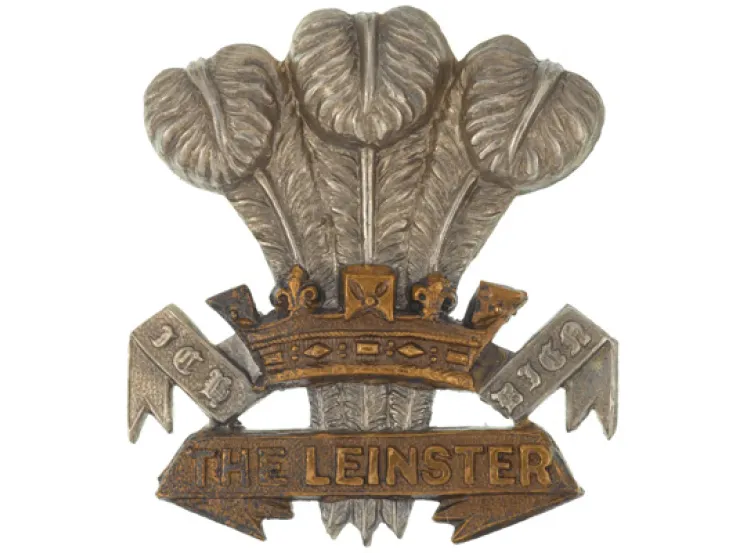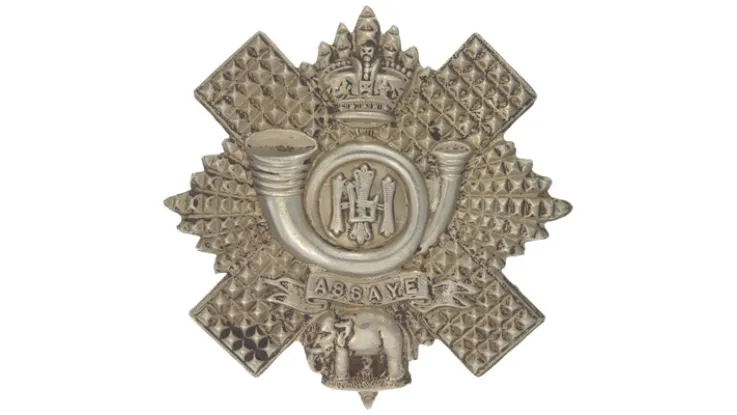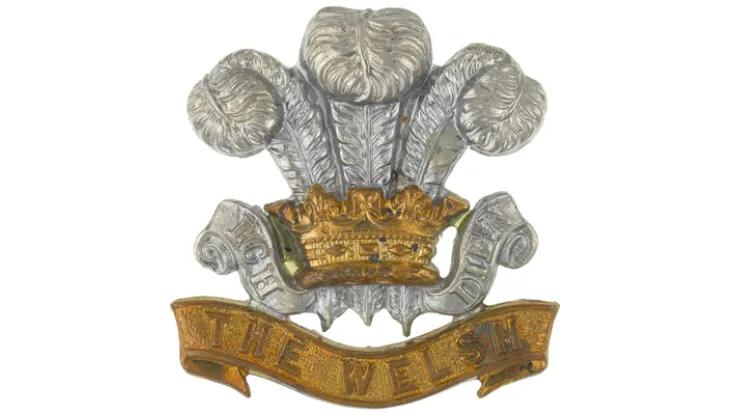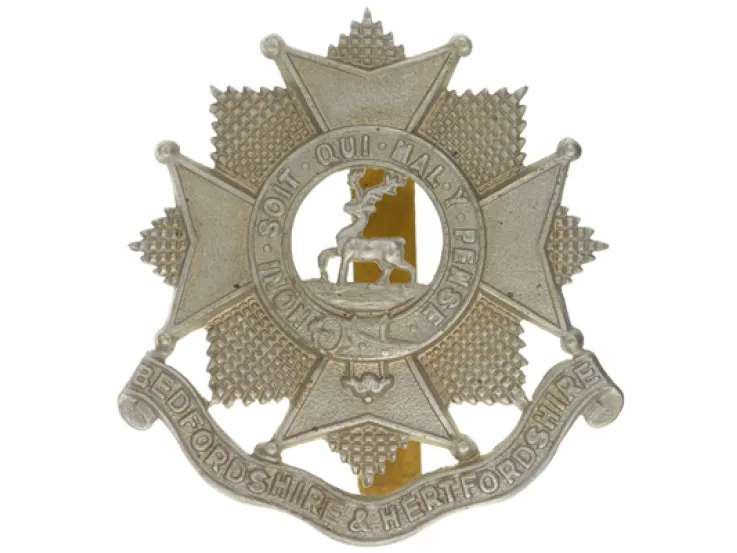Explore more from Regiments and Corps
77th (East Middlesex) Regiment of Foot (The Duke of Cambridge’s Own)
Related topics
Major Thomas Egerton and a sentry of the 77th (East Middlesex) Regiment, on the King's Bastion, Portsmouth, 1849
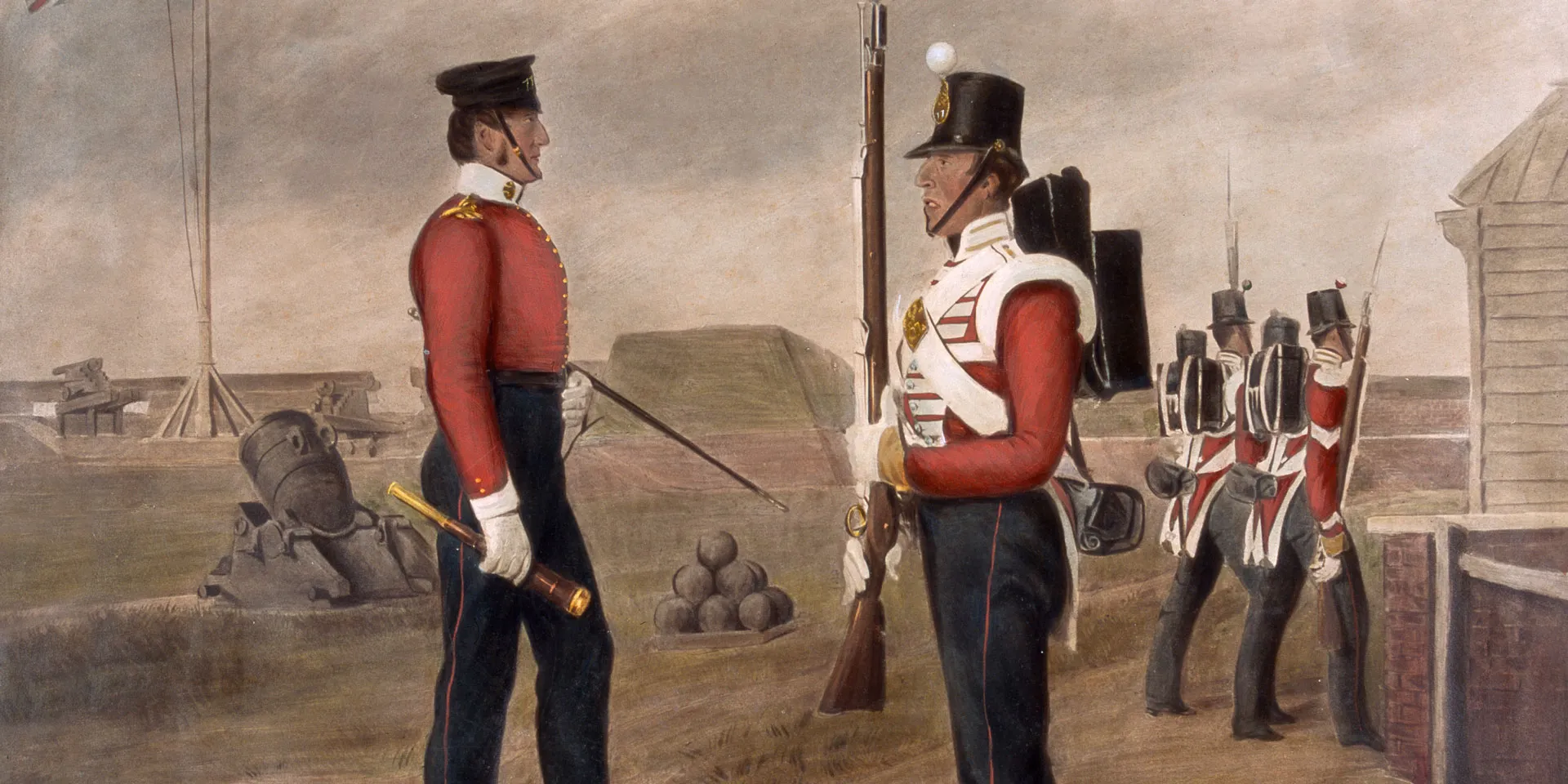
Origins
In 1787, tensions in India between Britain and France were high. The East India Company decided to raise four new regiments to defend its interests there. However, by the time they were formed, the threat of war had passed and the Company refused to pay for them.
Parliament therefore passed the East India Declaratory Act requiring that troops deemed necessary for the security of overseas territory be supported by revenues from that area. The British Army took the regiments on strength, but the East India Company was forced to pay.
One of these four units was the 77th (Hindoostan) Regiment, which had no link to two previous line regiments with that number.
Glengarry badge, 77th (East Middlesex) Regiment, c1874
Storming of Seringapatam, May 1799
India
The regiment landed in Bombay a year after its formation. This began a 19-year stay in India, which included the Siege of Seringapatam (1792) in the Third Mysore War (1790-92) and the capture of the Dutch settlements in Ceylon (now Sri Lanka) in 1795.
The unit was also part of the ‘Forlorn Hope’ at the storming of Seringapatam (1799) during the Fourth Mysore War (1798-99).
It returned to Britain in 1807. That same year, it took over the county association for East Middlesex from the 39th Foot.
In 1810, the Prince of Wales granted the regiment the right to use his plumes and motto on its badge, in recognition of its Indian service.
French war
In 1809, it took part in the abortive landings at Walcheren in the Low Countries. Then, in 1811, it joined the Peninsular War (1808-14).
It served until the end of the campaign and was one of the three regiments that stormed the breach at Ciudad Rodrigo (1812). It also fought at Bayonne (1814) and was the last British unit to leave France in 1814.
Great coat worn by Captain William Acton, 77th (East Middlesex) Regiment, at Inkerman, 1854
Soldiers of the 77th Regiment in winter kit in the Crimea, 1855
19th century
From 1814 until 1854, it undertook garrison duties in England, Ireland, Jamaica, Nova Scotia, Corfu and Malta. It then served during the Crimean War (1854-56), fighting at the Alma (1854), Inkerman (1854) and the Siege of Sevastopol (1854-55).
After a brief spell in Britain and Ireland, it sailed to India in 1857 to help suppress the Mutiny (1857-59). Returning to Britain in 1870, it became the first British regiment to travel through the Suez Canal. Further service in Britain and Ireland followed.
In 1876, the regiment incorporated ‘The Duke of Cambridge’s Own’ into its title, an honour granted by Prince George, Duke of Cambridge, the Army's Commander-in-Chief.
Legacy
It returned to India in 1880. A year later, it was amalgamated with the 57th (West Middlesex) Regiment of Foot to form The Duke of Cambridge’s Own (Middlesex Regiment).

